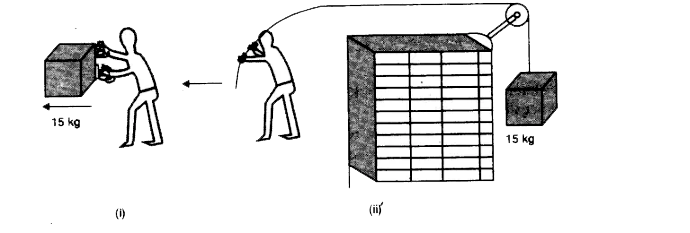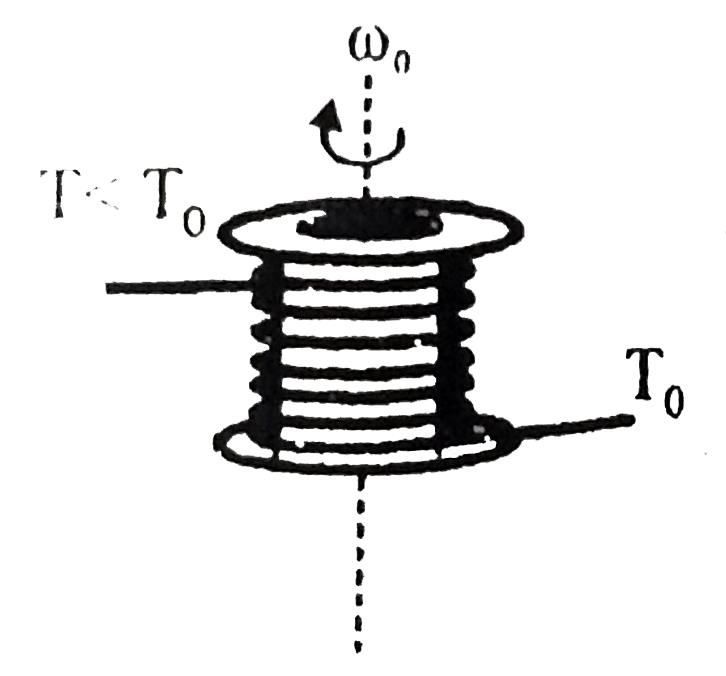The casting of a rocket in flight burns up due to friction. At whose expense the heat energy required for burning obtained ? The rocket or the atmosphere ,or both /
The only source of energy is the kinetic energy of the rocket. The atmosphere does not contribute any energy . Its role is only to provide friction to convert the kinetic energy of the rocket into heat energy .
Topper's Solved these Questions
Similar Questions
Answer the following:
a) The casing of a rocket in flight burns up due to friction. At whose expense is the heat required for burning obtained? The rocket or the atmosphere?
b) Comets move around the sun in highly elliptical orbits. The gravitational force on the comet due to the sun is not normal to the comet's velocity in general. Yet the work done by the gravitatonal force over every complete orbit of the comet is zero. Why?
c) An artificial satellite orbiting the earth in very atmosphere loses its energy grdually due to dissipation against atmospheric resistance, howerver small. Why then does its speed increase progressively as it comes closer and closer tothe earth? d)In fig i) the man walks 2m carrying a mass of 15 kg on his hands. In Fig ii) he walks the same distance pulling the rope behind him. The rope goes over pulley, and a mass of 15 kg hangs at its other end. In which case is the work done greater?

View SolutionAnswer the following:
a) The casing of a rocket in flight burns up due to friction. At whose expense is the heat required for burning obtained? The rocket or the atmosphere?
b) Comets move around the sun in highly elliptical orbits. The gravitational force on the comet due to the sun is not normal to the comet's velocity in general. Yet the work done by the gravitatonal force over every complete orbit of the comet is zero. Why?
c) An artificial satellite orbiting the earth in very atmosphere loses its energy grdually due to dissipation against atmospheric resistance, howerver small. Why then does its speed increase progressively as it comes closer and closer tothe earth? d)In fig i) the man walks 2m carrying a mass of 15 kg on his hands. In Fig ii) he walks the same distance pulling the rope behind him. The rope goes over pulley, and a mass of 15 kg hangs at its other end. In which case is the work done greater?

View Solution
Knowledge Check
In these questions, the 1st and The last sentence of the passage are numbered 1 and 6. The rest of the passage is split into four parts and named P, Q, R and S. These four parts are not given in their proper order. Read the sentences and find out which of the four combinations is correct.
1. A rocket burns a fuel that makes a great deal of gas at the back of the rocket.
P. Ordinary fuel will burn only in air, because it needs the oxygen in the air.
Q. A rocket can therefore travel outside the atmosphere in space where there is no air.
R. This gas pushes against the rocket and sends it forward.
S. However, rocket fuels have their oxygen in them and so they burn without air.
6. In fact, it will travel faster in space than in the air because the friction of the air is not there to slow it down.AQSRPBRPSQCSQPRDPRQSThe satellites when launched from the earth are not given the orbital velocity initially, a multistage rocket propeller carries the spacecraft up to its orbit and during each stage rocket has been fired to increase the velocity to acquire the desired velocity for a particular orbit. The last stage of the rocket brings the satellite in circular/elliptical (desired) orbit.
Consider a satellite of mass 150kg in a low circular orbit. In this orbit, we cannot neglect the effect of air drag. This air opposes the motion of satellite and hence the total mechanical energy of earth-satellite system decreases. That means the total energy becomes more negative and hence the orbital radius decreases which causes the increase in KE When the satellite comes in the low enough orbit, excessive thermal energy generation due to air friction may cause the satellite to burn up. Based on the above information, answer the following questions.
It has been mentioned in the passage that as r decreases, E decreases but K increases. The increase in K is [E= total mechanical energy, r= orbital radius, K= kinetic energy ]Adue to increase in gravitational PEBdue to decrease in gravitational PECdue to work done by air friction forceDboth (b) and (c)
These questions consists of two statements each printed as Assertion and Reason. While answering these question you are required to choose any one of the following five reponses
(a) If both Assertion and Reason arecorrect and Reason is the correct explanation of Asserrtion.
(b) If both Assertion and Reason are correct but Reason is not the correct explanation of Assertion.
(c ) If Assertion is true but Reason is false.
(d) If Assertion is false but Reason is true.
Assertion A block of mass m starts moving on a rough horizontal surface with a velocity v. It stops due to friction between the block and the surface after moving through a certain distance.
The surface is now tilted to an angle of 30∘ with the horizontal and the same block is made to go up on the surface with the same initial velocity v. The decrease in the mechanical energy in the second situation is smaller than that in the first situation.
Reason The coefficient of friction between the block and the surface decreases with the increase in the anglle of inclination.
View SolutionThese questions consists of two statements each printed as Assertion and Reason. While answering these question you are required to choose any one of the following five reponses
(a) If both Assertion and Reason arecorrect and Reason is the correct explanation of Asserrtion.
(b) If both Assertion and Reason are correct but Reason is not the correct explanation of Assertion.
(c ) If Assertion is true but Reason is false.
(d) If Assertion is false but Reason is true.
Assertion A block of mass m starts moving on a rough horizontal surface with a velocity v. It stops due to friction between the block and the surface after moving through a certain distance.
The surface is now tilted to an angle of 30∘ with the horizontal and the same block is made to go up on the surface with the same initial velocity v. The decrease in the mechanical energy in the second situation is smaller than that in the first situation.
Reason The coefficient of friction between the block and the surface decreases with the increase in the anglle of inclination.
View SolutionA capstan is a rotating drum (cylinder) over which a rope or cord slides in order to increase the tension due to friction. If the difference in tension between the two ends of the rope is 500 N and the capstan has a diameter of 10 cm and rotates with angular velocity 10rad/s. Capstan is made of iron and has mass 5 kg, specific heat 1000J/kg K. At what rate does temperature rise? Assume that the temperature in the capstan is uniform and all the thermal energy generated flows into it. Express your answer as ×x10−4^(∘)C Fill up value of x.

View Solution(a) An unpowered rocket is in flight in air. At a moment the tracking radar gives following data regarding the rocket. r = distance of the rocket from the radar = 4000m,drdt=0,dθdt=1.8deg/sec, where θ is the angle made by position vector of the rocket with respect to the vertical.

(a) Neglect atmospheric resistance and take g=9.8m/s2 at the concerned height. Neglect height of radar. Calculate the height of the rocket above the ground.
(b) Two points A and B are moving in X - Y plane with constant velocity of VA=(6ˆi−9ˆj)m/s and VB=(ˆi+ˆj)m/s respectively. At time t=0 they are 15 m apart and both of them lie on y axis with A lying away on positive Y axis with respect to B. What is the angular velocity of A with respect to B at t=1s?
View SolutionA rocket is fired vertically from the surface of mars with a speed of 2 km/s. If 20% of its initial energy is lost due to martian atmosphere resistance how far (in km) will the rocket go from the surface of mars before returning to it? Mass of mars =6.4×1023 kg, radius of mars =3395 km, G=6.67×10−11Nm2/kg2.
View SolutionThe satellites when launched from the earth are not given the orbital velocity initially, a multistage rocket propeller carries the spacecraft up to its orbit and during each stage rocket has been fired to increase the velocity to acquire the desired velocity for a particular orbit. The last stage of the rocket brings the satellite in circular/elliptical (desired) orbit.
Consider a satellite of mass 150kg in a low circular orbit. In this orbit, we cannot neglect the effect of air drag. This air opposes the motion of satellite and hence the total mechanical energy of earth-satellite system decreases. That means the total energy becomes more negative and hence the orbital radius decreases which causes the increase in KE When the satellite comes in the low enough orbit, excessive thermal energy generation due to air friction may cause the satellite to burn up. Based on the above information, answer the following questions.
It has been mentioned in the passage that as r decreases, E decreases but K increases. The increase in K is [E= total mechanical energy, r= orbital radius, K= kinetic energy ]
View Solution
